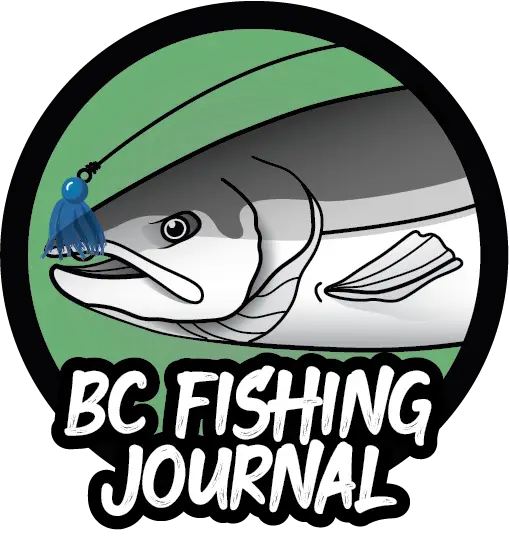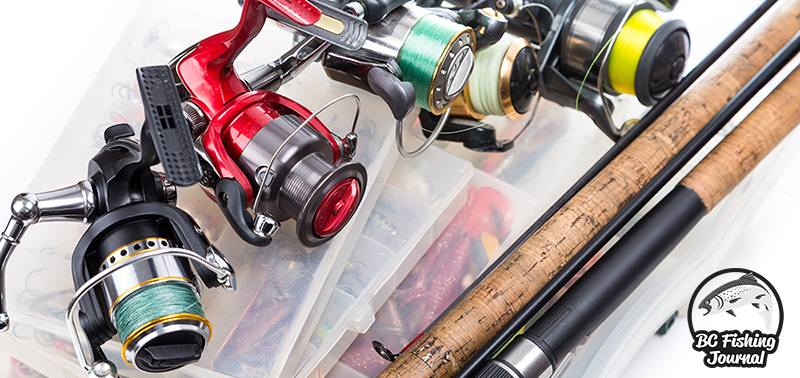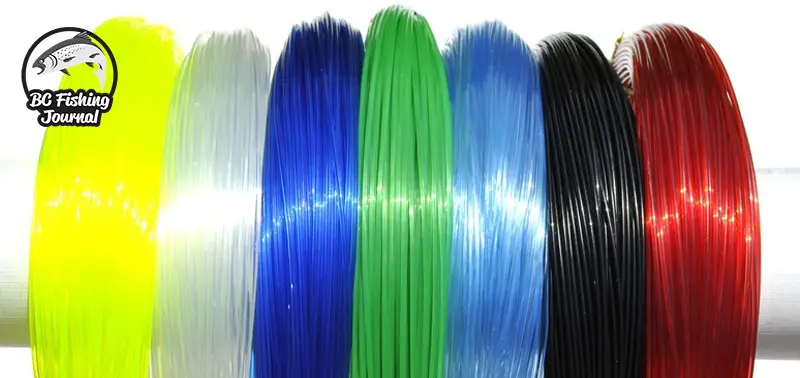
Best Monofilament Fishing Lines and Mono explained
If you’ve searched around at the monofilament options today, I think you’ll agree they are endless. It seems there’s a line for every specific fishing niche; each fish species, in a specific water type, in certain weather, and on and on it goes. In this tackle guide we’ll sort through the distractions of niche lines and focus on general line specifications that will help you better understand monofilament. Along with that, we’ll provide the best mono fishing lines that we have confidence in and cross these countless fishing niches.
Top Monofilament Fishing Lines
| Image | Name |
|---|---|
 | Maxima Ultragreen |
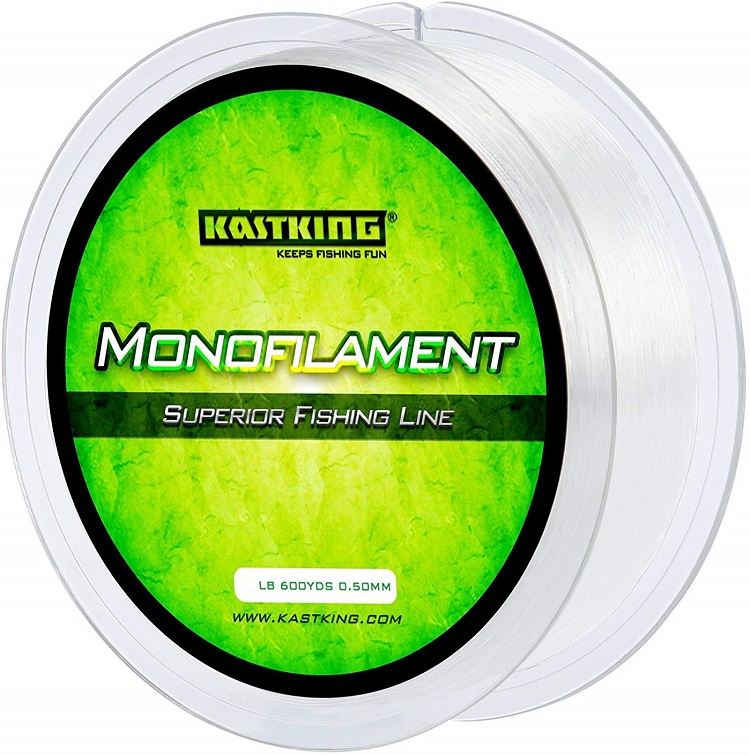 | KastKing Premium Monofilament |
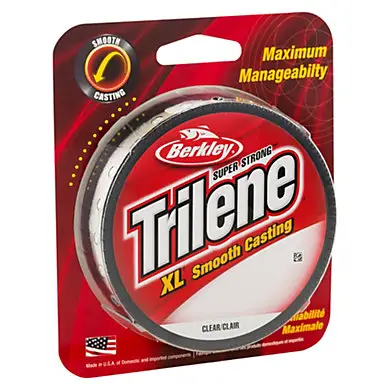 | Berkley Trilene XL Smooth Casting |
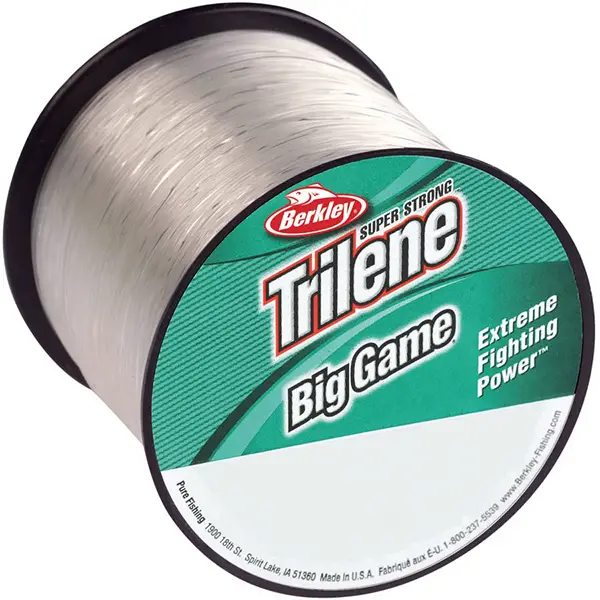 | Berkley Trilene Big Game |
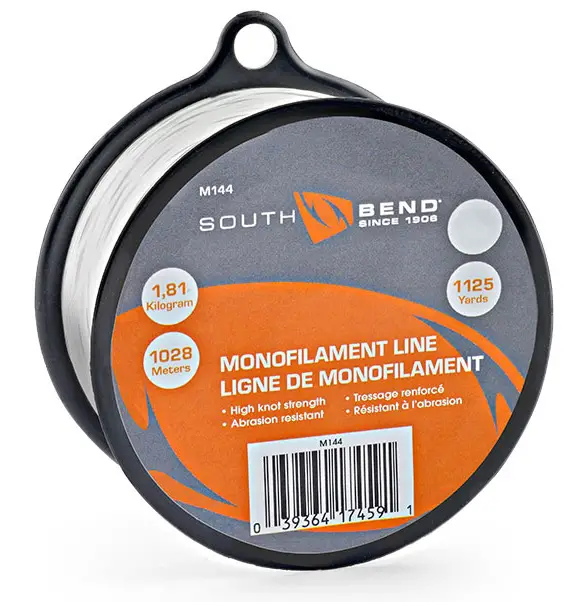 | South Bend Monofilament |
What To Consider When Buying Monofilament Fishing Line
In the following sections below I’ve defined the qualities to look at when choosing a monofilament line. It’s important to note that depending on the type of fishing you’re doing some of these qualities may be more important than others. For example, jigging in deeper water you’ll want a line with low stretch for the best sensitivity and hook sets. Whereas if you’re throwing a topwater or crankbait you may want a line with high stretch to provide a little give/delay in the hookset.
What is the difference between monofilament, fluorocarbon and braid line?
This guide is focusing on Monofilament but there are other types of lines with their various Pros & Cons. Below is a quick summary of these different lines.
Braided line often is very thin diameter line that casts easily and usually has a little amount of line memory and stretch, which makes it great to use in bait caster reels. Fluorocarbon line is great for use in clear water (e.g. Ice Fishing) and is harder to detect than most other fishing lines because it doesn’t reflect light as much, but does tend to have a lot of line memory. Monofilament can easily adapt to different levels of water clarity and usually has more stretch than other types of line, making it an excellent choice for unpredictable fish-fighting situations.
| Feature | Monofilament | Braid | Fluorocarbon |
| Diameter | Large | Small | Medium to Large |
| Stretch | High | Low | Low to Medium |
| Visibility (underwater) | Low to Medium | High | Low |
| Easy to work with (pliable, knot tying, etc). | Great | Poor | Good |
| Line Memory | Low to Medium | Low | High |
| Casting Distance | Good | Great | Good |
| Buoyancy (Lower means the quicker it sinks) | Medium | Medium to High | Low |
| Cost | Low | High | Medium to High |
Fishing Line Diameter
Diameter is the width of the line and typically defined in inches or mm. The general rule for fishing line is the smaller the diameter the better. However, we can’t simply get the smallest diameter line on market and neglect line strength/pound test, stretch, abrasion resistance, knot, etc as well. There’s always a decision to make on the balance of these aspects of the monofilament line, and you’ll have to give up something to gain another. Diameter might be the most important when choosing a fishing line as it impacts so much of the fishing experience.
The smaller the diameter of monofilament line:
- The further you can cast
- The more line you can put onto your reel
- The less visible the line is
- The better the lure action
- The quicker it will sink

Line Strength or Pound Test
The test of lines is rated by how many pounds of weight can be exerted on a line before it snaps. You generally won’t need a higher pound test if you’re fishing for small and low-fighting species like crappie or panfish. However, if you plan on catching a species that is strong or heavy, you should use a higher pound test. If you’re unsure on what line strength or pound test to use, a good rule would be to match the pound test rating to the fish species weight you’re targeting (and would lean on the upper weights of the species).
Correctly setting your drag and knowing how to fight a fish correctly will have an impact on the fishing line you choose. There are fewer line breaks with a weaker (lighter pound) line if you have your drag set correctly. Additionally, fishing line is less likely to snap when a fish is pulling away from you or when you are pulling a fish up from a drop or deep water. Fishing line is most likely to snap by snagging your hook in foliage, wood, rocks, etc.
Line Stretch
You can expect a high stretch and flexible fishing line to absorb shock better and bend instead of breaking. This is what I like to call “line forgiveness”. However, If the line has too much stretch it may negatively impact hooksets without having that sensitivity between rod tip and lure.
Another good way to think of line stretch is to consider how you’re planning to fish. Are you dropping a bait below a boat and waiting to “feel” the bite? If so, you need a high level of sensitivity in your line and that means a line with low stretch. Whereas, if you’re ripping top water baits across the water you don’t need the sensitivity factor but instead a line with higher stretch to be able to handle the shock of the strike. As you fish different lines, you’ll find which are more conducive to your approach, and pick lines that offer the right balance of rigidness and stretch.
Line Memory
Simply put…
High memory line = Bad
Low memory line = Good
If a line has a lot of memory, it will be difficult to cast and is prone to tangling inside your rod or reel. Instead of sinking, a memory-line will also twist and float above the water where no weight is holding it down. Additionally, you’ll be more prone to “birds nests” when casting where the line forms this glob of tangles as the spool is spinning to release the line, there are few things that drive me more crazy than birds nests on the water. Although most monofilament line comes with some memory from the original package, the weight exerted on the end from lures and fish should loosen it out over time.
Line Color
Typically, you want a line to be as close to invisible as possible underwater. Most fishing line comes in a clear color to adapt to various fishing water types, giving you a more versatile line for different bodies of water and water clarity. That said, there are instances where a bright colored / high-visibility line (red, neon green, etc) allows a deep-water or ice fishermen to watch their line for any movements or bites.
What is the best way to use monofilament line?
Monofilament is very versatile and you can use it for almost any type of setup. Generally, you will want to use monofilament when you don’t need to cast a long distance or when the water clarity is average/murky. If you’re using a baitcaster reel, you may have better luck with braided line because it will tangle less and give you further casting distance.
How often should you replace mono line?
If you leave fishing line too long in your reel without changing it, stress cracks from fighting fish or general abrasion that happens over time will leave the line weaker or compromised. As for when to replace your monofilament, well this really depends on how often you’re fishing. If you’re fishing often, for the best amount of dependability, try to change your line 1 to 2 times a year.
Best Mono Fishing Lines – Tackle Recommendations

The price point on this line is higher because it’s a long lasting quality line. If you’re avid angler who is constantly out on the water this line holds up long term. However, for the casual angler the cheaper Berkley option will be more than sufficient.
Pros
- Reliable line with excellent strength
- Low memory for reduced coiling
- Low visibility underwater
- Pliable line, easy to work with
Cons
- Higher price point
KastKing has put out a few lines of monofilament lines out, this is their most popular monofilament. We love that this line has a variety of sizes, weight and color options. Spool sizes are 300 & 600 yards, with weight ranges from 4lb to 30lb.
KastKing has really impressed me, they continue to develop good fishing tackle at a very low cost. Initially I chalked them up as cheap imported gear with good marketing. That said, they’ve continued to surprise me by improving their line up of gear and quality. Additionally, they as a manufacturer have even won some iCast fishing awards over the years.
Pros
- Lots of spool sizes and weight options
- Low underwater visibility
- Abrasion resistant
- Low water absorption
Cons
- Unproven longevity of line

Pros
- Excellent line strength and abrasion resistance
- Optimal stretch
- Thin and discreet
- Low line memory
- Various color options
- Low price point
Cons
- Difficult to detect bites

Pros
- Exceptional line strength and abrasion resistance
- Ties strong knots
- Fair amount of stretch
- Various color and line length options
Cons
- Prone to having line memory
- Thick and stiff diameter

Pros
- Thick and durable at higher pound test ratings
- Discreet and thin at lower pound test ratings
- Generous line length options
Cons
- Excessive line stretch
- May be prone to line memory
- Might easily break in pressure points of knots
- Only clear color options
How to Spool a Spinning Reel with Monofilament
Here is a very helpful video in outlining how to spool your spinning reel with mono. Mike outlines some key tips along with a few pointers that even more advanced anglers may not be aware of.
Additional Mono Fishing Lines Tackle
Conclusion
For the best mono fishing line should be decided by how often you fish. If your fishing weekly, I’d recommend a higher cost/quality monofilament that will last longer and you won’t have to change as often. If you’re only fishing throughout the Summer or a few months of the year there are a number of cheaper mono options. Fishing line is one of the most important pieces of the fishing setup and I don’t mind spending a little more money for a monofilament that gives me confidence in my line. In this round up of the best monofilament fishing lines my number one is Maxima Ultragreen. It’s strength, durability, suppleness and low visibility makes it a clear winner for me.
If you have any questions in regards to the monofilament fishing lines, please don’t hesitate to contact us or leave a comment at the bottom of the page. Tight Lines! Jesse
About the Author

